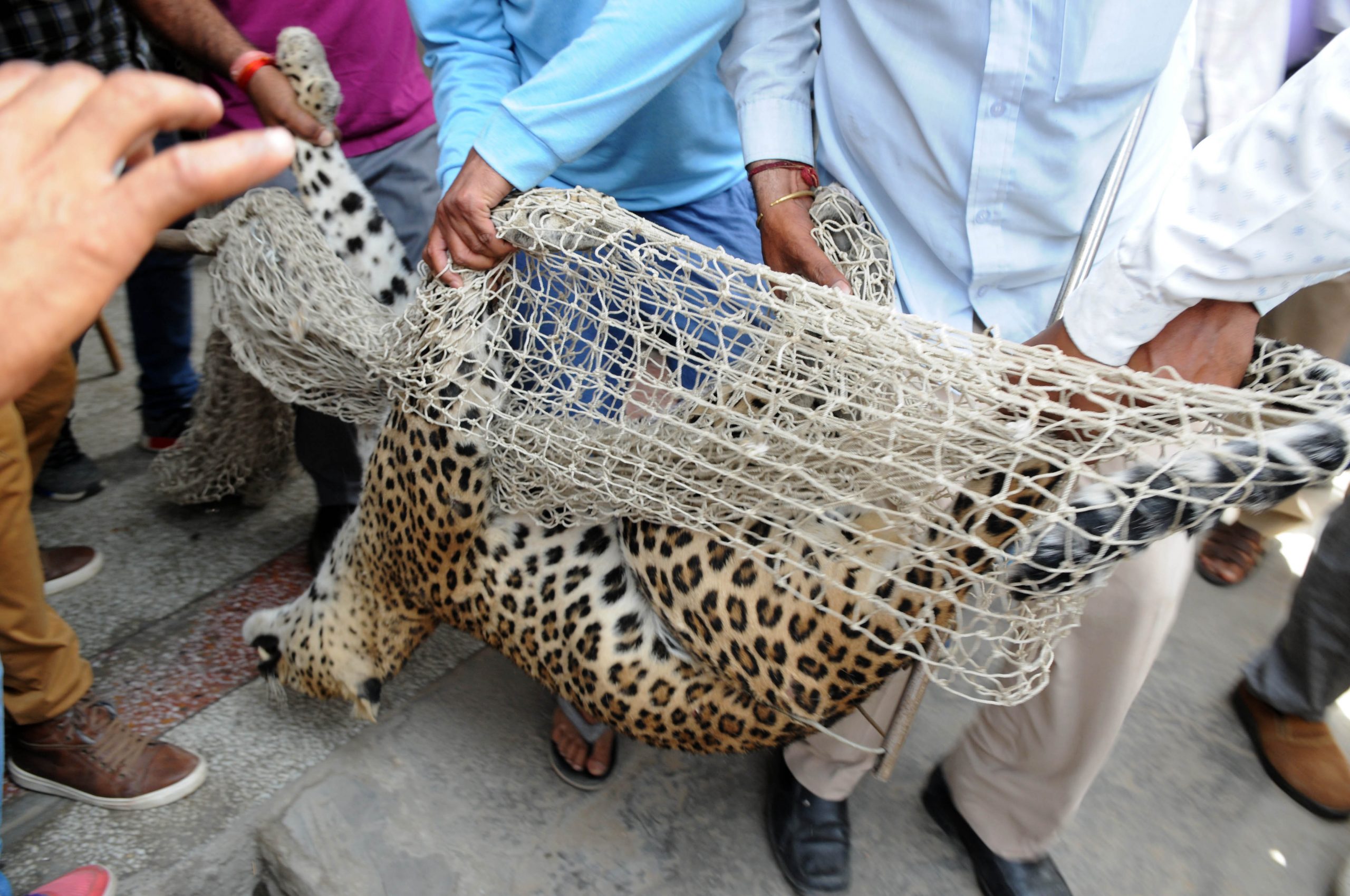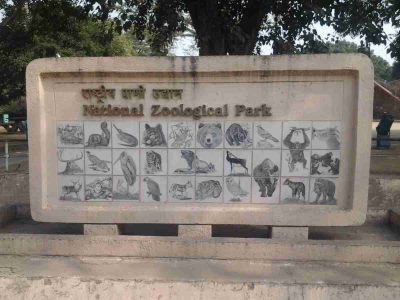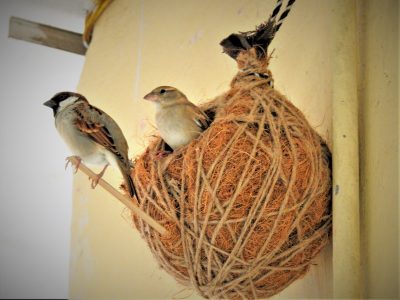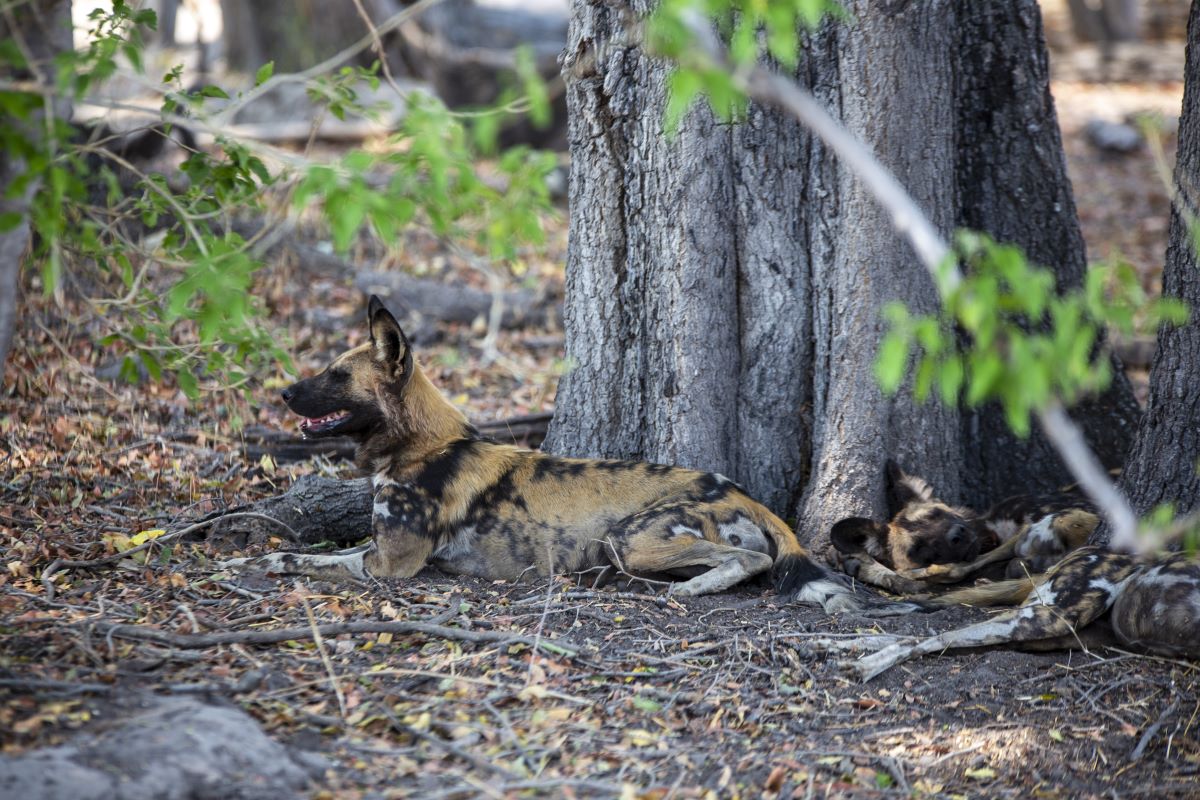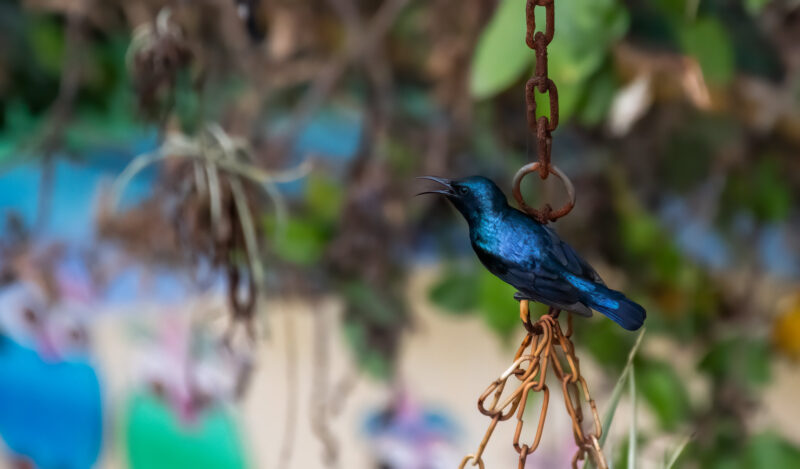On January 15, this year, a leopard was spotted chasing a Nilgai in Bawana, which falls in North-West Delhi, prompting a search operation. Just a month ago, similar leopard sightings were witnessed multiple times at Sainik Farms near Saket, triggering panic among the residents of south Delhi’s densely inhabited locality.
Soon several videos of leopards roaming in and around the farmhouses went viral. Some even show the big cat, which are mostly known for staying quiet, attacking a man during a rescue mission and catching a stray dog.
A team of about 40 local police, along with the Forest Department, ran a massive search and rescue operation, but met with no success.
However, this is not a new phenomenon. The city’s landscape has historically supported not only leopards but other wild animals. The largest patch of the Aravalli forests in south Delhi is notified at the Asola Bhatti Wildlife Sanctuary and extends into Gurugram. The Yamuna Biodiversity Park, in the north of Delhi, is frequented by leopards from the Rajaji National Park, some 200 km from the park.
The frequent sightings of these big cats in the urban spaces of the city not only poses a risk to domestic animals, and local residents but has also put the wild feline population at risk.
In December last year, a leopard was found dead on National Highway (NH) 44, in north Delhi’s Alipur. Some eight leopards died in road accidents in the last decade.
Why such sightings in Delhi-NCR
A report released by the Bombay Natural History Society (BNHS) in 2022 stated that Asola Bhatti Wildlife Sanctuary (ABWS), located in the southern part of the Delhi Ridge, is the northernmost stretch of the ancient Aravalli Range, which begins in Gujarat and extends across Rajasthan and Haryana entering Delhi at Gurugram.
The ABWS is also part of the Sariska-Delhi Wildlife Corridor, which runs from the Sariska Tiger Reserve in Rajasthan to the Delhi Ridge. Leopard movements from Rajasthan to Delhi have been traced on this corridor.
“The Aravalli Range has been historically home to the feline cats. The Tughlakabad region and some regions falling under Asola were earlier part of Aravalli, but have now developed into urban space. The area is connected through a rough but continuous patch of hills to Sariska. That is why we frequently see leopard sightings in this region,” explains Sunil Harsana, a conservationist working in Mangar Bani forest area.
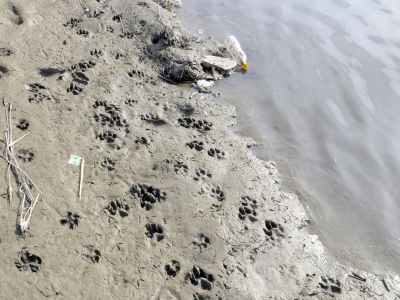
“The leopard has always been sighted in the nearby Asola region. It increased in the early 2010s due to the introduction of tigers in Sariska in 2008. However, since 2016, leopard sightings have become very frequent in the region due to increase in leopard population and shrinking space,” he says on the increased sightings.
The sightings show that the leopards are using the traditional corridor near Asola Bhatti. Also, an increase in tiger population in Sariska is pushing the leopard population towards the Asola region and hence in the urban spaces in Delhi, he adds.
According to the ‘Status of the Indian Leopard and Other Mammals in Asola Bhatti Wildlife Sanctuary report, 2022’, eight unique leopards were sighted in the wildlife sanctuary.
“Leopards can also prey on smaller mammals like monkeys, hares and rats. These cats are highly adaptable and possess the ability to survive upon a small prey base that allows them to live near human settlements where they prey on feral dogs, pigs and even scavenge occasionally,” explains Harsana, who has been working as conservationist in Mangar Bani.
Aritra Kshetty, Lead – Elephant Conservation at World Wild Fund (WWF), India, who has also worked on leopard conservation says, the cat sightings are a result of “the increase in the interaction between leopard habitats and people”.
“Leopards have always persisted in and around the Aravalli area which is connected to Sariska in south-west. But as the city [Delhi-NCR] keeps growing, the leopard habitats keep getting modified. They also adapted for living close to human settlements. And hence there are increased sightings of these cats,” he explains on how increasing urban space has been a well-known reason for persistent leopard sightings in Delhi-NCR.
K Shetty believes increased media reporting also has a role to play.
“So even earlier the locals used to know that there were leopards around. But there was not a lot of media attention on that issue.”
Besides, with the increase in the highways, the chance of leopard collision with the fast-moving vehicles has also increased.
“So, you see reports of leopard sightings and accidents around highways that have come up in and around Delhi,” he adds.
Mitigation
“The big challenge with leopards living near people is that of human casualties. This can be avoided by adopting safety practices. Like having enough lighting in areas in the inhabited areas near the villages, or having toilets for people so that they don’t go out in the open. This reduces the risk of encounters with leopards,” says K Shetty.
On the other hand, Harsana believes that “big cats have arrived on Delhi’s doorstep” and people “need to get acquainted” with these cats.
“Parts of south Delhi need to be declared as sensitive zone. We also need to inform residents about the leopard behaviour and how humans can peacefully coexist with the big cats,” he added.

